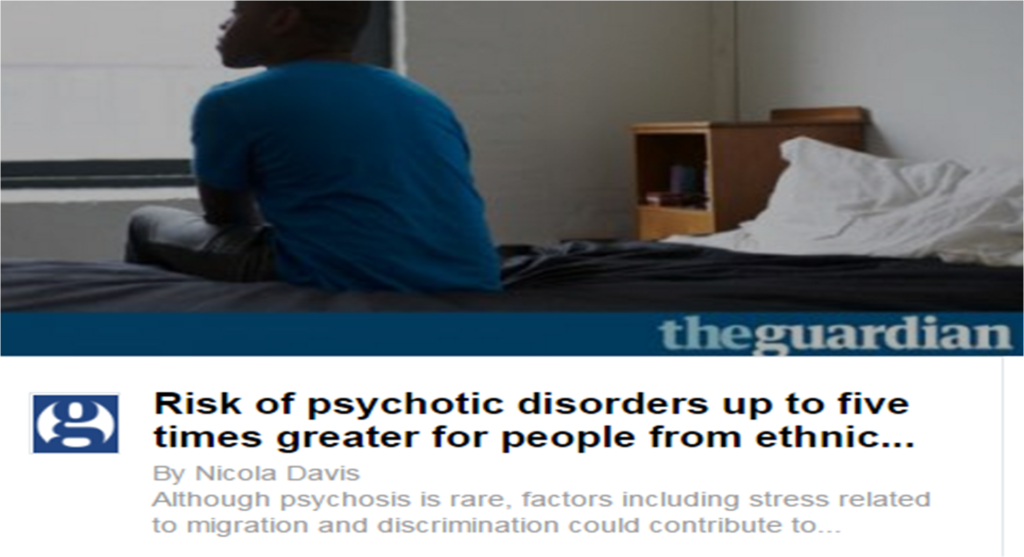By Dr. Styliani Spyridi, Consultant Psychiatrist On July 17, 2025, the World Health Organization (WHO)…
Risk of psychotic disorders up to five times greater for people from ethnic minorities – UK study
Σημαντική μελέτη στην οποία είχα την τύχη να συνεργαστώ με κορυφαίους συναδέλφους στην έρευνα των ψυχώσεων.
 Περίληψη (Αγγλικά)
Περίληψη (Αγγλικά)
Schizophr Bull. 2017 May 17. doi: 10.1093/schbul/sbx010.
OBJECTIVE: Several ethnic minority groups experience elevated rates of first-episode psychosis (FEP), but most studies have been conducted in urban settings. We investigated whether incidence varied by ethnicity, generation status, and age-at-immigration in a diverse, mixed rural, and urban setting.
METHOD: We identified 687 people, 16-35 years, with an ICD-10 diagnosis of FEP, presenting to Early Intervention Psychosis services in the East of England over 2 million person-years. We used multilevel Poisson regression to examine incidence variation by ethnicity, rural-urban setting, generation status, and age-at-immigration, adjusting for several confounders including age, sex, socioeconomic status, population density, and deprivation.
RESULTS: People of black African (incidence rate ratio: 4.06; 95% confidence interval [CI]: 2.63-6.25), black Caribbean (4.63; 95% CI: 2.38-8.98) and Pakistani (2.31; 95% CI: 1.35-3.94) origins were at greatest FEP risk relative to the white British population, after multivariable adjustment. Non-British white migrants were not at increased FEP risk (1.00; 95% CI: 0.77-1.32). These patterns were independently present in rural and urban settings. For first-generation migrants, migration during childhood conferred greatest risk of psychotic disorders (2.20; 95% CI: 1.33-3.62).
CONCLUSIONS: Elevated psychosis risk in several visible minority groups could not be explained by differences in postmigratory socioeconomic disadvantage. These patterns were observed across rural and urban areas of our catchment, suggesting that elevated psychosis risk for some ethnic minority groups is not a result of selection processes influencing rural-urban living. Timing of exposure to migration during childhood, an important social and neurodevelopmental window, may also elevate risk.
KEYWORDS: early intervention; epidemiology; ethnicity; incidence; migration; social determinants; urbanicity



